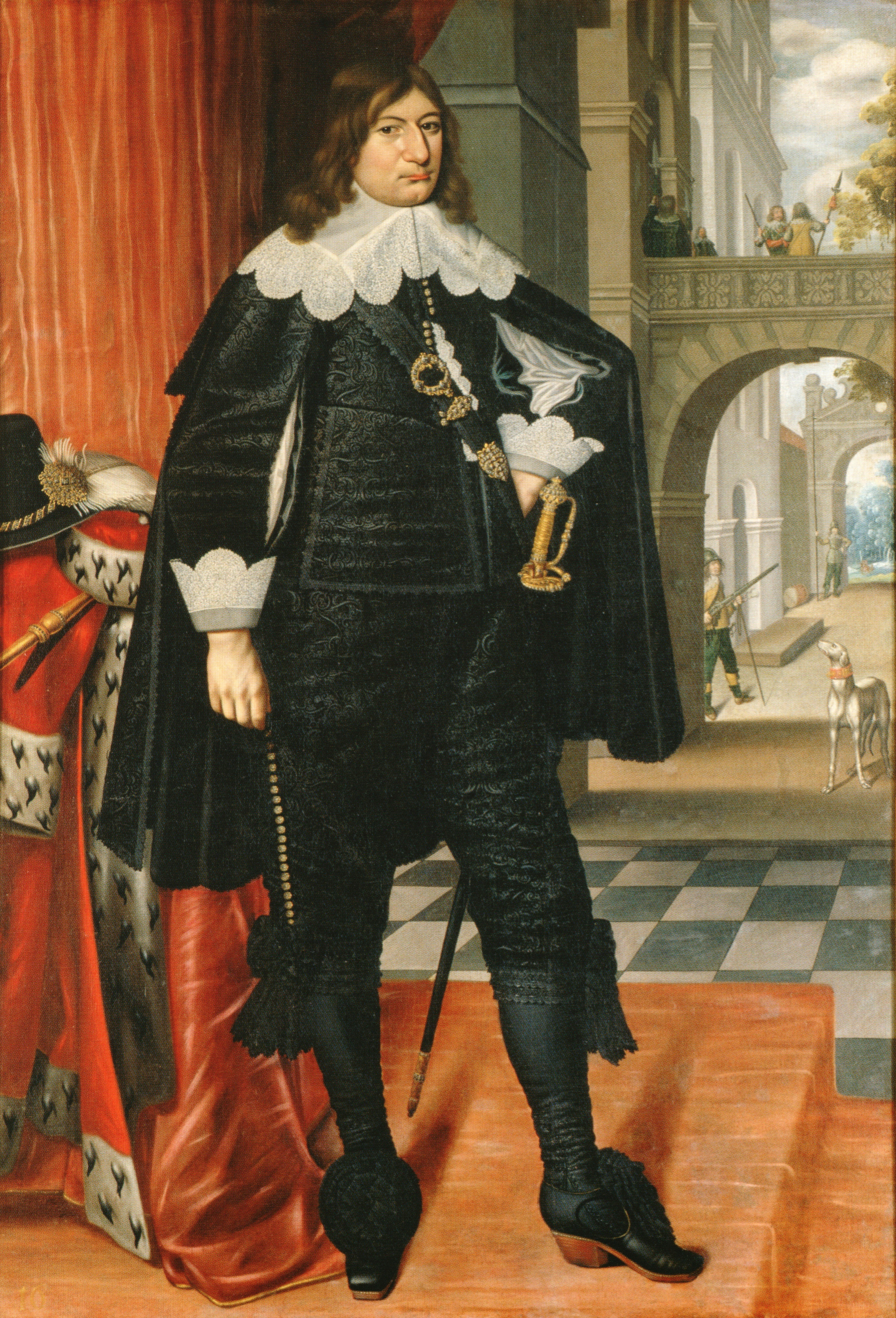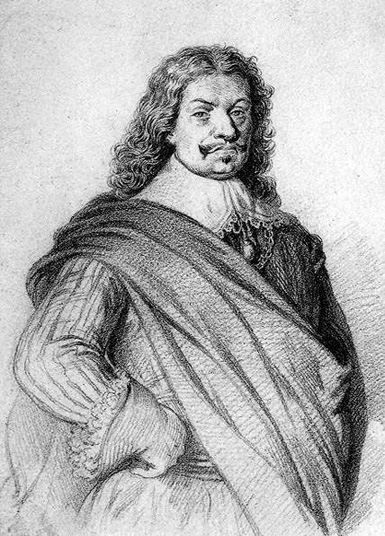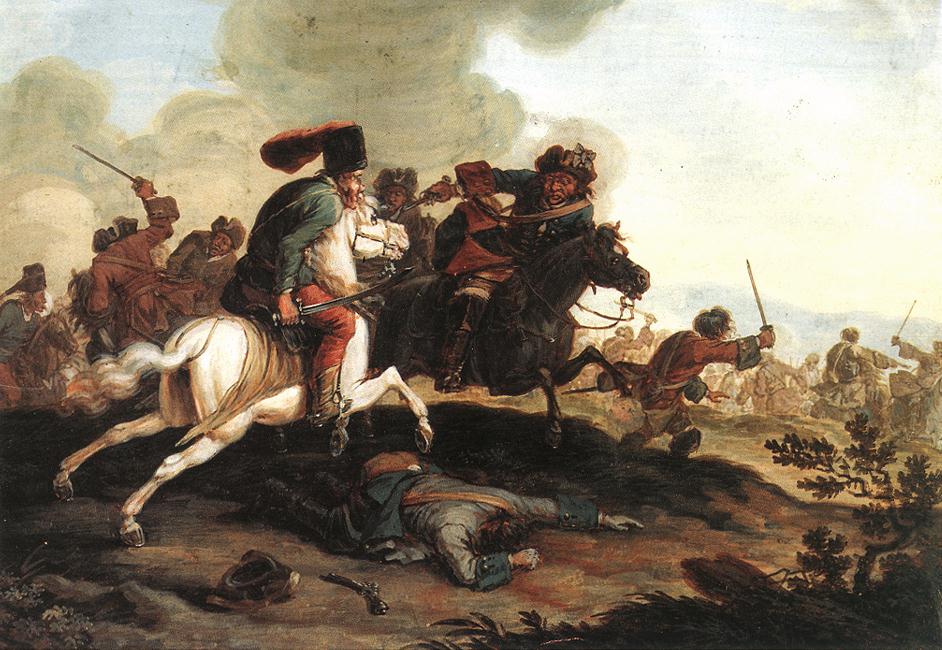|
Treaty Of Vossem (1673)
The Treaty of Vossem was signed on 6 June 1673, between Frederick William, Elector Brandenburg and Louis XIV of France; England, then a French ally against the Dutch, was included as a party to the terms but not a signatory. It was ratified by both parties on 20 July. Previously a Dutch ally, Frederick William withdrew from the Franco-Dutch War, in return for subsidies and fortresses on the Upper Rhine captured by the French. He rejoined the war on the side of the Dutch in July 1674. Background After the 1668 Treaty of Aix-la-Chapelle, Louis XIV decided acquiring the Spanish Netherlands first required him to defeat the Dutch Republic, previously an ally. Supported by Münster and the Electorate of Cologne, he planned to attack across their vulnerable eastern border, using the Duchy of Cleves, a possession of Frederick William, uncle of William of Orange. As French intentions became clear, the Dutch negotiated with Frederick William for the defence of Cleves. He agreed to pro ... [...More Info...] [...Related Items...] OR: [Wikipedia] [Google] [Baidu] |
Frederick William, Elector Of Brandenburg
Frederick William (; 16 February 1620 – 29 April 1688) was Elector of Brandenburg and Duke of Prussia, thus ruler of Brandenburg-Prussia, from 1640 until his death in 1688. A member of the House of Hohenzollern, he is popularly known as "the Great Elector" (') because of his military and political achievements. Frederick William was a staunch pillar of the Calvinist faith, associated with the rising commercial class. He saw the importance of trade and promoted it vigorously. His shrewd domestic reforms gave Prussia a strong position in the post-Westphalian political order of Northern-Central Europe, setting up Prussia for elevation from duchy to kingdom, achieved under his son and successor. Biography Elector Frederick William was born in Berlin to George William, Elector of Brandenburg, and Elisabeth Charlotte of the Palatinate. His inheritance consisted of the Margraviate of Brandenburg, the Duchy of Cleves, the County of Mark, and the Duchy of Prussia. Owing to th ... [...More Info...] [...Related Items...] OR: [Wikipedia] [Google] [Baidu] |
Orsoy
Orsoy �ɔʁzaʊ̯ from approximately 1273 to 1974 an independent town, most recently within the Kreis Moers district, is today a district (officially a residential area) and one of four boroughs of the North Rhine-Westphalian town of Rheinberg on the left bank of the Lower Rhine in the Kreis Wesel district. The word Orsoy, pronounced ''Oschau'' or ''Orsau'' means "horse pasture" (Rossaue). Orsoy itself was in the Middle Ages a powerful fortified town with high walls and four gates. Although much of the fortifications were destroyed by Louis XIV in 1672 and some remains later in the Second World War, a tower, circa 50 percent of the walls and part of the moat remain today giving some indication of the scale of the fortifications. The borough of Orsoy includes the Orsoyerberg district, as well as the hamlets of Drießen, Plank, Hasenfeld and Milchplatz. History Teutons supplanted the Celtic inhabitants around Orsoy in 750 BC and Caesar invaded the area establishing Roman R ... [...More Info...] [...Related Items...] OR: [Wikipedia] [Google] [Baidu] |
Raimondo Montecuccoli
Raimondo Montecuccoli (; 21 February 1609 – 16 October 1680) was an Italian-born professional soldier, military theorist, and diplomat, who served the Habsburg monarchy. Experiencing the Thirty Years' War from scratch as a simple footsoldier, he rose through the ranks into a regiment holder and became an important cavalry commander in the late stages. Serving the Habsburgs as war counsellor and envoy, he commanded their troops in the Second Northern War and the Austro-Turkish War (1663–1664), Austro-Turkish War of 1663–64 where he scored an impressive victory in the Battle of Saint Gotthard (1664), Battle of Saint Gotthard. Afterwards, he became president of the Hofkriegsrat and briefly returned as supreme commander of the Imperial forces during the Franco-Dutch War. Montecuccoli was considered the only commander able to compete with the French general Turenne (1611–1675), and like him, was closely associated with the post-1648 development of Line infantry#Linear tactics ... [...More Info...] [...Related Items...] OR: [Wikipedia] [Google] [Baidu] |
Rhineland
The Rhineland ( ; ; ; ) is a loosely defined area of Western Germany along the Rhine, chiefly Middle Rhine, its middle section. It is the main industrial heartland of Germany because of its many factories, and it has historic ties to the Holy Roman Empire, Prussia, and the German Empire. Term Historically, the term "Rhinelands" refers to a loosely defined region encompassing the land on the banks of the Rhine, which were settled by Ripuarian Franks, Ripuarian and Salian Franks and became part of Frankish Austrasia. In the High Middle Ages, numerous Imperial States along the river emerged from the former stem duchy of Lotharingia, without developing any common political or cultural identity. A "Rhineland" conceptualization can be traced to the period of the Holy Roman Empire from the sixteenth until the eighteenth centuries when the Empire's Imperial Estates (territories) were grouped into regional districts in charge of defense and judicial execution, known as Imperial Circ ... [...More Info...] [...Related Items...] OR: [Wikipedia] [Google] [Baidu] |
Calvinism
Reformed Christianity, also called Calvinism, is a major branch of Protestantism that began during the 16th-century Protestant Reformation. In the modern day, it is largely represented by the Continental Reformed Christian, Presbyterian, Congregational, and Waldensians traditions, as well as parts of the Methodist, Anglican (known as "Episcopal" in some regions) and Baptist traditions. Reformed theology emphasizes the authority of the Bible and the sovereignty of God, as well as covenant theology, a framework for understanding the Bible based on God's covenants with people. Reformed churches emphasize simplicity in worship. Several forms of ecclesiastical polity are exercised by Reformed churches, including presbyterian, congregational, and some episcopal. Articulated by John Calvin, the Reformed faith holds to a spiritual (pneumatic) presence of Christ in the Lord's Supper. Emerging in the 16th century, the Reformed tradition developed over several genera ... [...More Info...] [...Related Items...] OR: [Wikipedia] [Google] [Baidu] |
Kuruc
Kuruc (, plural ''kurucok''), also spelled kurutz, refers to a group of armed anti- Habsburg insurgents in the Kingdom of Hungary between 1671 and 1711. Over time, the term kuruc has come to designate Hungarians who advocate strict national independence and the term " labanc" to designate Hungarians who advocate cooperating with outside powers. The term kuruc is used in both a positive sense to mean “patriotic” and in a negative sense to mean “chauvinistic.” The term labanc is almost always used in a negative sense to mean “disloyal” or “traitorous”. This term originally referred to Habsburg troops, mainly Austrian imperial soldiers, garrisoned in Hungary. The kuruc army was composed mostly of impoverished lower Hungarian nobility and serfs, including Hungarian Protestant peasants and Slavs. They managed to conquer large parts of Hungary in several uprisings from Transylvania before they were defeated by Habsburg imperial troops. Name The word ''kuruc'' was ... [...More Info...] [...Related Items...] OR: [Wikipedia] [Google] [Baidu] |
Leopold I, Holy Roman Emperor
Leopold I (Leopold Ignaz Joseph Balthasar Franz Felician; ; 9 June 1640 – 5 May 1705) was Holy Roman Emperor, King of Hungary, List of Croatian monarchs, Croatia, and List of Bohemian monarchs, Bohemia. The second son of Ferdinand III, Holy Roman Emperor, by his first wife, Maria Anna of Spain, Leopold became heir apparent in 1654 after the death of his elder brother Ferdinand IV, King of the Romans, Ferdinand IV. Elected in 1658, Leopold ruled the Holy Roman Empire until his death in 1705, becoming the second longest-ruling emperor (46 years and 9 months) of the House of Habsburg. He was both a composer and considerable patron of music. Leopold's reign is known for conflicts with the Ottoman Empire in the Great Turkish War (1683–1699) and rivalry with Louis XIV, a contemporary and first cousin (on the maternal side; fourth cousin on the paternal side), in the west. After more than a decade of warfare, Leopold emerged victorious in the east thanks to the military talents of Pr ... [...More Info...] [...Related Items...] OR: [Wikipedia] [Google] [Baidu] |
Duchy Of Lorraine
The Duchy of Lorraine was a principality of the Holy Roman Empire which existed from the 10th century until 1766 when it was annexed by the kingdom of France. It gave its name to the larger present-day region of Lorraine in northeastern France. Its capital was Nancy. It was founded in 959 following the division of Lotharingia into two separate duchies: Upper and Lower Lorraine, the westernmost parts of the Holy Roman Empire The Holy Roman Empire, also known as the Holy Roman Empire of the German Nation after 1512, was a polity in Central and Western Europe, usually headed by the Holy Roman Emperor. It developed in the Early Middle Ages, and lasted for a millennium .... The Lower duchy was quickly dismantled, while Upper Lorraine came to be known as simply the Duchy of Lorraine. The Duchy of Lorraine was coveted and briefly occupied by the dukes of Burgundy and the kings of France, but was ruled by the dukes of the House of Lorraine after 1473. In 1737, the duchy was give ... [...More Info...] [...Related Items...] OR: [Wikipedia] [Google] [Baidu] |
Holy Roman Empire
The Holy Roman Empire, also known as the Holy Roman Empire of the German Nation after 1512, was a polity in Central and Western Europe, usually headed by the Holy Roman Emperor. It developed in the Early Middle Ages, and lasted for a millennium until its Dissolution of the Holy Roman Empire, dissolution in 1806 during the Napoleonic Wars. For most of its history the Empire comprised the entirety of the modern countries of Germany, Czechia, Austria, the Netherlands, Belgium, Switzerland, Slovenia, and Luxembourg, most of north-central Italy, and large parts of modern-day east France and west Poland. On 25 December 800, Pope Leo III crowned the Frankish king Charlemagne Roman emperor, reviving the title more than three centuries after the fall of the Western Roman Empire in 476. The title lapsed in 924, but was revived in 962 when Otto I, OttoI was crowned emperor by Pope John XII, as Charlemagne's and the Carolingian Empire's successor. From 962 until the 12th century, the empire ... [...More Info...] [...Related Items...] OR: [Wikipedia] [Google] [Baidu] |
The Dutch Water Line
The Dutch Waterline (; modern spelling: ''Hollandse Waterlinie'') was a series of water-based defences conceived by Maurice of Nassau in the early 17th century, and realised by his half brother Frederick Henry. Combined with natural bodies of water, the Waterline could be used to transform Holland, the westernmost region of the Netherlands and adjacent to the North Sea, almost into an island. In the 19th century, the Line was extended to include Utrecht. On July 26, 2021, the line was added to the Defence Line of Amsterdam to become the Dutch Water Defence Lines UNESCO World Heritage Site. History Early in the Eighty Years' War of Independence against Spain, the Dutch realized that flooding low-lying areas formed an excellent defence against enemy troops. This was demonstrated, for example, during the Siege of Leiden in 1574. In the latter half of the war, when the province of Holland had been freed of Spanish troops, Maurice of Nassau planned to defend it with a line of floo ... [...More Info...] [...Related Items...] OR: [Wikipedia] [Google] [Baidu] |
Arnhem
Arnhem ( ; ; Central Dutch dialects, Ernems: ''Èrnem'') is a Cities of the Netherlands, city and List of municipalities of the Netherlands, municipality situated in the eastern part of the Netherlands, near the German border. It is the capital of the Provinces of the Netherlands, province of Gelderland, located on both banks of the rivers Nederrijn and Sint-Jansbeek, which was the source of the city's development. Arnhem is home to the Hogeschool van Arnhem en Nijmegen, ArtEZ Institute of the Arts, Netherlands Open Air Museum, Airborne Museum 'Hartenstein', Royal Burgers' Zoo, NOC*NSF and National Sports Centre Papendal. The north corner of the municipality is part of the Hoge Veluwe National Park. It is approximately in area, consisting of heathlands, sand dunes, and woodlands. History Early history The oldest archeological findings of human activity around Arnhem are two firestones of about 70,000 years ago. These come from the Stone Age, when the Neanderthals lived ... [...More Info...] [...Related Items...] OR: [Wikipedia] [Google] [Baidu] |









